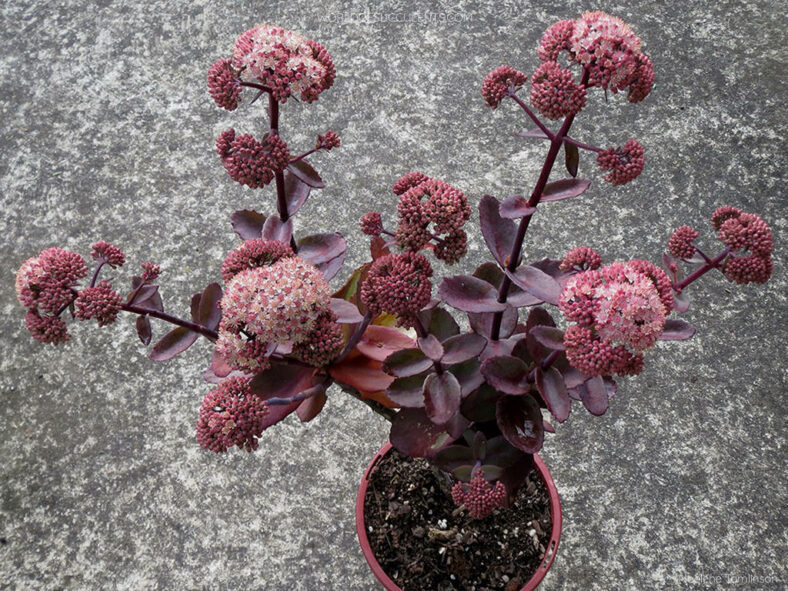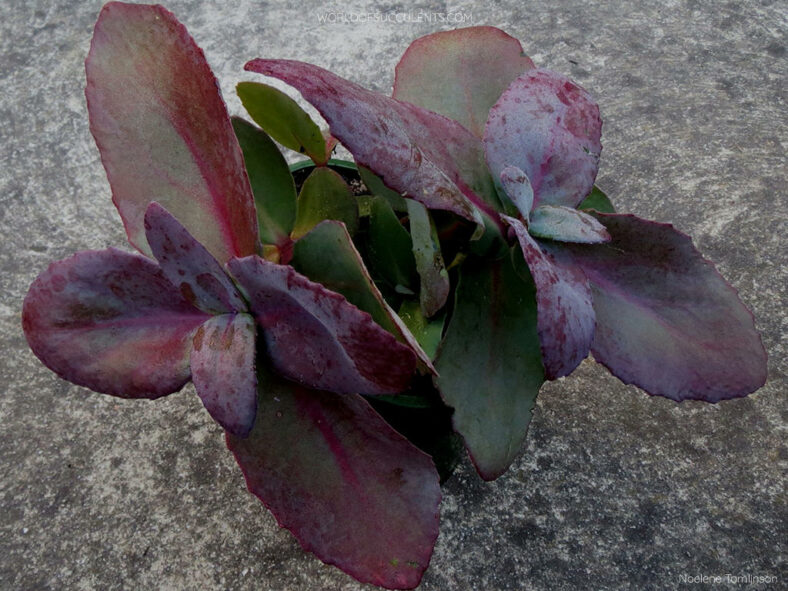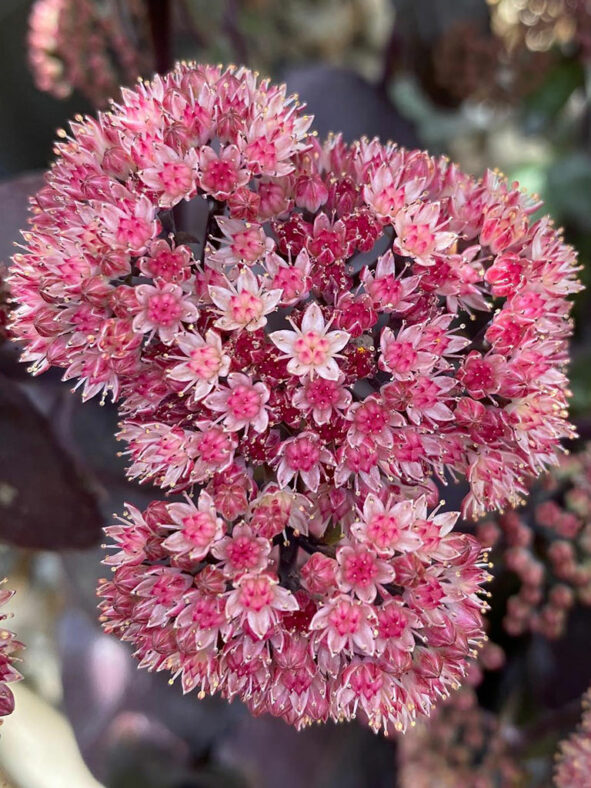Scientific Name
Hylotelephium 'Xenox'
Synonym(s)
Hylotelephium telephium 'Xenox', Sedum telephium 'Xenox', Sedum 'Xenox'
Scientific Classification
Family: Crassulaceae
Subfamily: Sempervivoideae
Tribe: Telephieae
Genus: Hylotelephium
Origin
Hylotelephium 'Xenox' is a hybrid made by Hubert Oudshoorn in 2001 from a chance cross-pollination of two unknown seedling selections of Hylotelephium telephium (formerly Sedum telephium). It was discovered by the inventor in Rijpwetering, Netherlands, in 2002 and patented (PP16888) in 2006.
Description
Hylotelephium 'Xenox', also known as Hylotelephium telephium 'Xenox', is a clump-forming succulent with basal branches that bear glaucous purple-green leaves that deepen to burgundy-purple with age. It has a semi-upright habit and can grow to 20 inches (50 cm) tall. The leaves are fleshy, broadly ovate with slightly toothed margins, and arranged in opposite pairs. They can measure up to 3.2 inches (8 cm) long and 2 inches (5 cm) wide.
The star-shaped flowers have a harmonious color range (from red to pink and white) from bud to flower. They can reach up to 0.3 inches (0.8 cm) in diameter and appear in large, compact, terminal and axillary clusters in summer.
Hylotelephium 'Xenox' is similar to Hylotelephium telephium 'Karfunkelstein', formerly known as Sedum telephium 'Karfunkelstein'.

How to Grow and Care for Hylotelephium 'Xenox'
Light: This succulent prefers full sun. It tolerates light to partial shade in hot summer climates but will produce weak, floppy growth when grown in too much shade. Plant your H. 'Xenox' in an area of your garden with 6 hours of sunlight daily.
Soil: H. 'Xenox' does not need rich soil but requires excellent drainage. You can choose a commercial potting mix for succulents or make one yourself.
Temperature: This plant is tolerant of heat and drought and is also cold-hardy, making it a popular outdoor succulent. H. 'Xenox' can withstand temperatures as low as -30 °F (-34.4 °C). USDA Plant Hardiness Zones 4a to 9b, -30 to 30 °F (-34.4 to -1.1 °C).
Watering: The best way to water H. 'Xenox' is to use the "soak and dry" method. Get the soil completely wet, and then wait until it is dry before watering again.
Fertilizing: Feed annually with a balanced fertilizer. Apply the fertilizer to the soil according to the package directions in spring as new growth appears.
Repotting: Plants grown in containers require a little more care than those in the gardens. When your H. 'Xenox' outgrows its current pot, move it to a larger pot to better support the plant. Spring is the best time to repot this plant. Make sure the soil is dry before you begin the repotting process.
Propagation: This succulent can be propagated by division or stem cuttings. Dividing your H. 'Xenox' is easy and can be carried out at almost any time in the growing season, though it is probably best done in spring or early summer. Take stem cuttings in summer.
Learn more at How to Grow and Care for Hylotelephium.
Toxicity of Hylotelephium 'Xenox'
H. 'Xenox' can be mildly toxic to humans and animals.
Links
- Back to genus Hylotelephium
- Succupedia: Browse succulents by Scientific Name, Common Name, Genus, Family, USDA Hardiness Zone, Origin, or cacti by Genus
Photo Gallery
Click on a photo to see a larger version.


